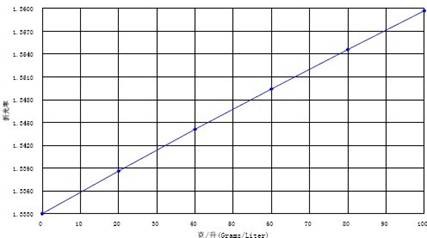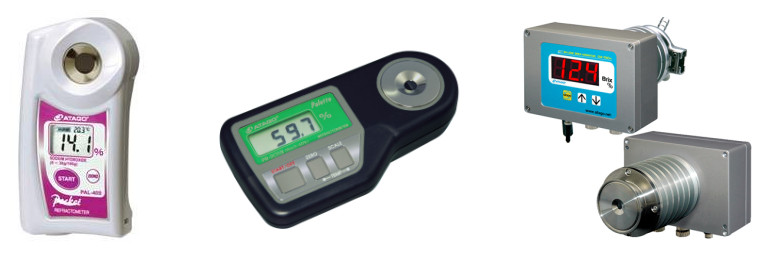The main chemical composition of bauxite is Al 2 O 3 , generally 40% to 70% by mass, and contains SiO 2 , Fe 2 O 3 , TiO 2 and a small amount of CAO. MgO and trace Ga, V, P, V, Cr, etc. Al 2 O 3 is present in the form of a mineral into: gibbsite (Al 2 O 3 • 3H 2 O), a boehmite, Diaspore (Al 2 O 3 • H 2 O).         There are many methods for preparing Al 2 O 3 from bauxite . At present, the Alkali method is almost adopted in industry, and it is divided into three methods: Bayer method, sintering method and joint method.             Al 2 O 3 • 3H 2 O (or Al 2 O 3 • H 2 O ) + NaOH → (leaching /decomposition) NaAl(OH) 4 + red mud →                  (seed decomposition /evaporation, causticization) Al 2 (OH) 3 → (calcined) Al 2 O 3 .     Among them, the Bayer process is a typical hydrometallurgical process and has an absolute advantage in alumina production. The key process is: leaching of bauxite - the main component of leaching mother liquor is NaOH . The quality and quantity of caustic soda are related to the yield of Al 2 O 3 , and its quality is strictly required. Therefore, the inspection and analysis of the quality of caustic soda entering the factory is an important task of the laboratory of the aluminum plant, and the operating frequency is high. . Selecting a fast, convenient concentration detection method is undoubtedly very important. The detection of liquid alkali concentration in the laboratory is mainly based on the national standard [ GB/T 4348.1-2013 " Determination of sodium hydroxide and sodium carbonate for industrial use " ] . That is, in the sample solution, barium chloride is first added, sodium carbonate is converted into barium carbonate, and then phenolphthalein is used as an indicator to titrate with hydrochloric acid standard solution to an end point. The reaction is as follows:                                Na 2 CO 3  +  BaCl 2 → BaCO 3 ↓+2NaCl                             NaOH + HCl→ NaCl + H 2 O  In the instrument configuration, the acid-base indicator can be manually titrated to determine the terminal. It can be calculated based on the amount of hydrochloric acid consumed or directly read by an automatic potentiometric titrator (acid-base titration). The former is purely manual operation and is a classic traditional method. The cost is low, but it is time consuming and laborious. There is a large human error, and the judgment of the titration end point is different. The latter, although highly automated, the equipment is expensive and the electrodes need to be replaced frequently. Previous researchers have found that under certain conditions , the concentration of certain media is related to the refractive index of light, and the refractive index of these media solutions can be measured using a refractometer. The concentration of these media can be obtained accordingly. Such media include: liquid caustic soda, ammonia , dimethylformamide (DMF), hydrogen peroxide, ethylene glycol, etc. Atago is a global leader in refractometry. It is this characteristic of media that has been used to develop nearly 100 media concentration meters. With the constant improvement of the refractometer type, we can not only use the on-site sampling of the handheld product, but also can sample it into the laboratory to use the high-precision benchtop refractometer to measure, and can also use the online refractometer to perform in-situ measurement to overcome the process. data lag, environmental sampling, temperature changes, such as the accuracy of the laboratory manual data caused. Timely adjustment of process conditions ensures the stability of product quality indicators.      Refractive principle measures the concentration of a substance and uses the physical and optical properties of the substance. The test process does not consume any reagents. The whole process is quite fast and portable. The mini digital refractometer Pal-40S is a dedicated liquid alkali concentration meter with a measuring range of 0.0-38.0%, a resolution of 0.1%, an accuracy of ± 0.2%, and automatic temperature compensation. Accuracy of digital refractometer PR-201a is improved to ± 0.1%, range Brix: 0.0-60.0%, automatic temperature compensation, not only can the conversion relationship between liquid alkali concentration and refractive index be defined, but also full-scale detection (saturated solution) The concentration of the alkaline solution is 50%). The online refractometer CM-800a can realize the in-situ detection of liquid alkali solution in addition to the above-mentioned functions. Its range is: Brix: 0.0-80.0%, the rate is 0.01%, accuracy is ± 0.1%, automatic Good linear correlation between concentration of liquid alkali solution and refractive index Alkaline concentration meter selection model: PAL-40S PR-201a CM-800a After an alumina company uses our company's Pal-40S and CM-800a, when the lye carrier truck is unloading: 1. Is the concentration up to standard: Is there water or even water? - At a glance. 2. Cannot reach the required concentration, the price needs to be recalculated - an important basis for billing 3. The first two liquid caustic discharge sites, 10 workers, busy busy guard discharge, sampling and inspection, and now a worker at each discharge point, according to the data obtained from the central control room to determine whether to take samples. 4. The supply of raw materials - unloading workers - the possibility of collusion between laboratory personnel due to interest is reduced. The production department can adjust the amount of liquid caustic soda based on the taste of the ore. The yield of Al 2 O 3 is stable and controllable. 5. The safety has been significantly improved, reducing the number of points where work injuries may occur. (The incident that burned liquid caustic soda workers occurred) Graphite Bar,Graphite Rod,Falcon Graphite Rods,Graphite Rod Electrodes CARBONS TECH&CREATION(HENAN) INDUSTRY CO.,LTD , https://www.kyisostaticgraphites.com
